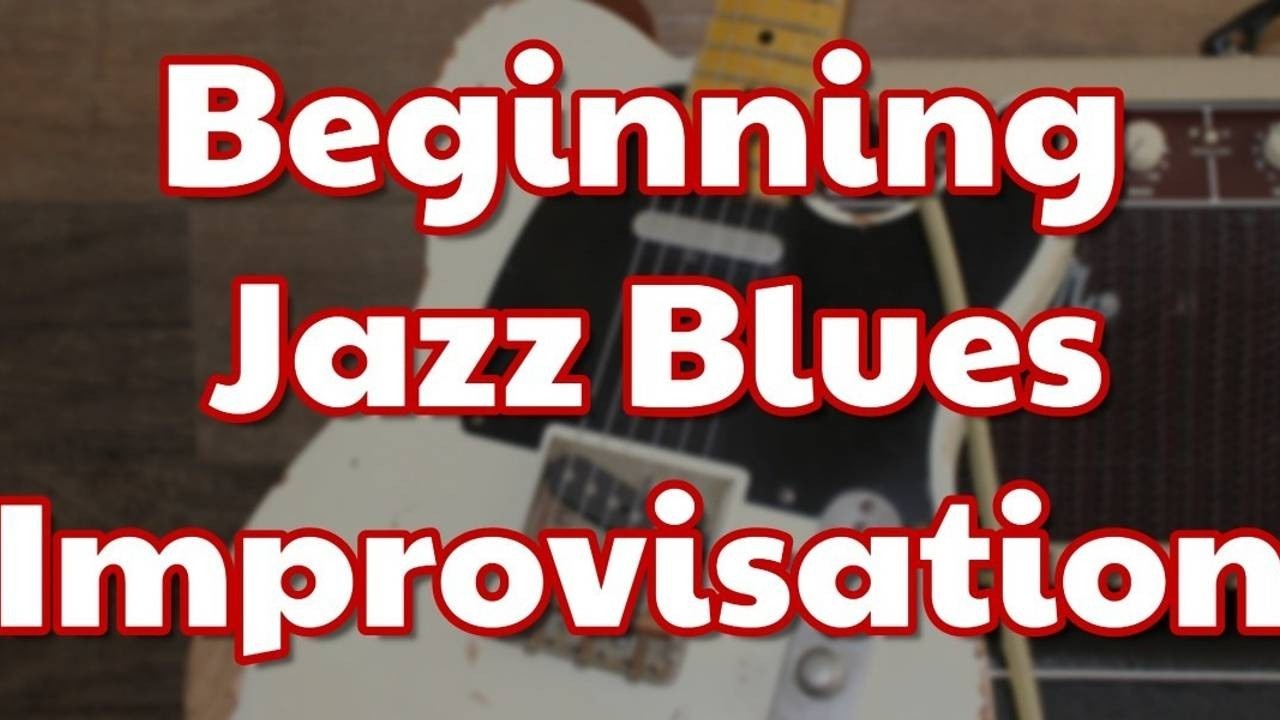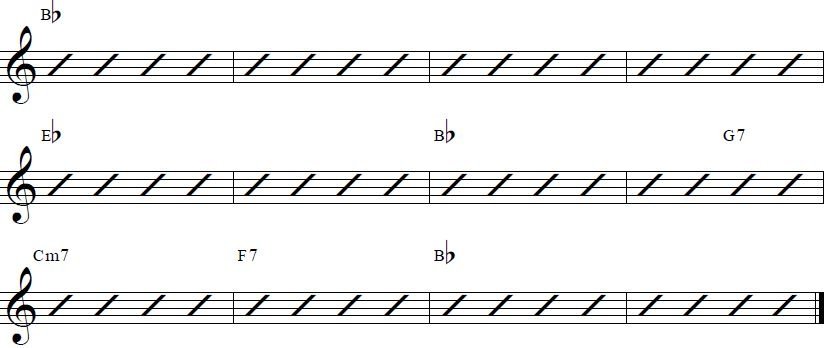
Beginning Jazz Blues Improvisation
Jul 20, 2018
Jazz Guitar Scales Shortcut
Being able to play the blues convincingly is crucial for any professional or aspiring jazz musician. Many players look at the chord progression on blues and think, "That's easy!"
However, while on the surface it may seem simple, there is a big difference between faking jazz blues and really doing it with authority. There is vocabulary involved that is crucial to making it sound right.
Moreover, your blues language or vocabulary can be superimposed on a number of different sounds. Many players like to take things from a traditional sound to a more modern "out" sound. The inverse is also possible! We can take really "out" sounding ideas and bring them home a bit, so to speak, with some blues language.
Make sure you download the PDF we've provided here. It contains scales, licks, and a chart with a standard 12-bar blues progression in Bb!
Download ALL of the licks here: "Beginning Jazz Blues Improvisation"
Join our Community here.
In this lesson, we're going to look at how to start improvising on a Bb blues in a jazz context. Since the focus of this lesson is on beginning jazz blues improvisation, we're going to focus on two simple scales that you probably already know.
Learning all the theory, scales, arpeggios, etc., is important, but we also just want to get started, right? For that reason, we're going to take a bit of a shortcut here to get us going.
We will be playing over a blues in Bb. Why? Well, if you go into any jazz jam in North America - or in the world, for that matter - and someone calls a blues, it is almost always in F or Bb.
Do make it a point to learn it in all 12 keys, though, as there are plenty of blues tunes written in different keys. No cheating! ;-)
What Are We Doing Here?
It's simple! You probably already know the minor blues scale, but in case you forgot it, here's a reminder. I've provided the two scales between which you will be switching for this exercise.


How Do We Apply It?
First, let's look at the form for a standard jazz blues in Bb.

In the first four bars, we have a I chord which then goes to the IV for two bars. Then, it comes back to the I chord which leads us to the turnaround in the last four bars. Nothing too crazy, right?
Let's discuss how we're going to use our two scales over this.
Over the first four bars, we're going to use the Bb major / G minor blues. Then, over the last 8 bars, we will use Bb minor blues. THAT'S IT.
Why Is This Important?
If you have any experience soloing in a rock context, you might notice that a lot of it entails simply picking one scale or key and playing over the progression that way.
Of course, this is not always the case and some players do like to target chord tones, but this is generally how many beginners approach it.

Well, in jazz music, "playing the changes" requires that we are able to treat each chord as its own sound. This doesn't mean you'll never take the "rock approach" I mentioned earlier, but this is certainly one of the more preferred methods in jazz.
For that reason, it is important that we are able to approach any progression this way. That includes the blues.
Targeting Specific Chord Tones
Another important concept that we want to start getting the hang of here, is the concept of important chord tones, otherwise known as guide tones. This is as important when playing the blues as it is in any other progression.
Targeting these guide tones, or more specifically, 3rds and 7ths, on strong beats, helps to really bring out the sound of the chord.
If the improviser is good enough, the listener should be able to hear all of the changes going by even without the help of any bass or chordal accompaniment.
Idiomatic Bluesings
A very popular concept in all blues playing is to play the #9 (or b3) of the chord and bend or slide into the 3rd. So, for example, against a Bb7 chord, you could play Db and bend or slide it into D.
Try it for yourself and you'll see just how prevalent this neat little trick is in blues playing!
Here are some examples of how you can approach this over Bb7 and Eb7. I've highlighted the #9 to 3 transition in both.
Over Bb7

Over Eb7

Another very popular blues cliche is to make use of that blue note, otherwise known as the b5 of the chord. You can find some good examples of this in the PDF! Speaking of which...
Download the PDF
Make sure you download the PDF we have provided here. It contains the two scales we covered, some really great licks, and a chart with the standard blues changes in Bb for your reference.
Download ALL of the licks here: "Beginning Jazz Blues Improvisation"
Join our Community here.
Your Turn!
Now it's your turn to try. In the video above, I trade choruses with you so you can solo along with me and steal some ideas.
BONUS: More Jazz Blues Guitar Improv Tips
In this more recent video, we discuss how we can use timing, variations and much more with just the pentatonic scale to add to your jazz blues improvisation. Check it out!









